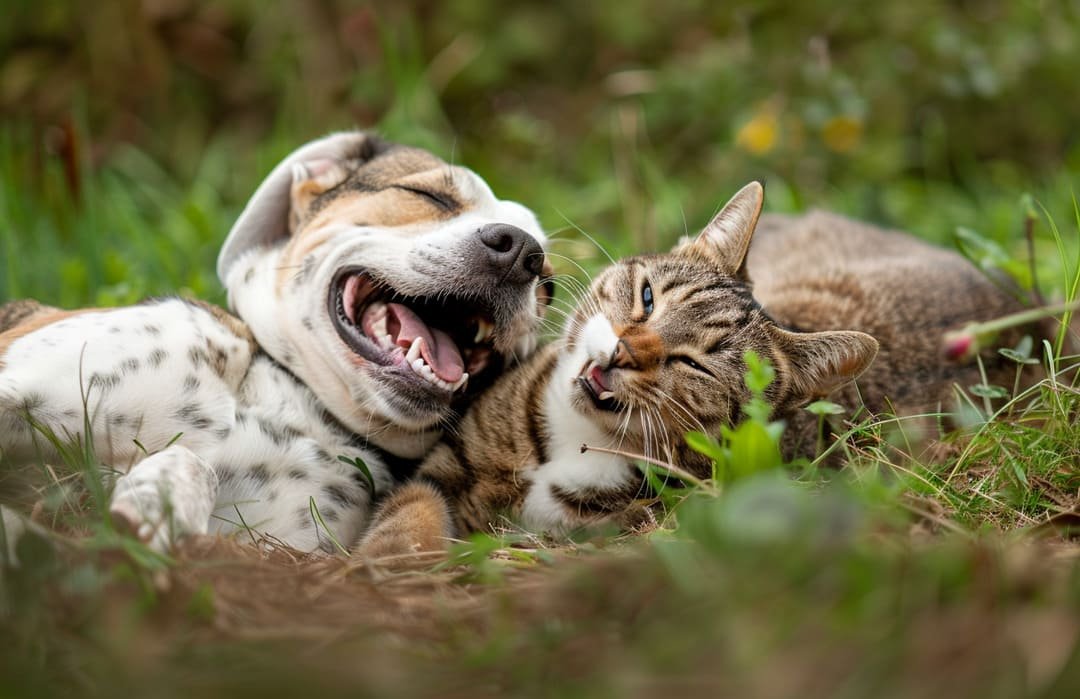Dogs are cherished members of our families, bringing joy, companionship, and unconditional love into our lives. However, as pet parents, it's vital to be aware of potential health concerns that can affect our furry friends. Today, we delve into a critical topic: cancer on dog skin symptoms. Understanding the signs and symptoms of skin cancer in dogs is key to early detection and effective treatment. Let's explore this important subject to ensure the well-being of our canine companions.
Understanding Skin Cancer in Dogs
Overview of skin cancer in dogsSkin cancer in dogs is a prevalent condition that can manifest in various forms, including malignant tumors and abnormal growths on the skin. Understanding the different types of skin cancer that can affect our canine companions is crucial for early detection and timely intervention.
Common types of skin cancer in dogs
-
Mast Cell Tumors: These are the most common form of skin cancer in dogs and often appear as lumps or bumps on the skin.
-
Melanoma: A type of skin cancer that develops from melanocytes, cells responsible for skin pigmentation.
-
Squamous Cell Carcinoma: Can occur on areas of the body with less hair and more exposure to sunlight, such as the nose and ears.
Risk factors for skin cancer in dogsSeveral factors can increase a dog's risk of developing skin cancer, including:
-
Prolonged sun exposure
-
Breed predispositions
-
Weakened immune system
By recognizing these risk factors and being aware of the common types of skin cancer, pet owners can take proactive steps to protect their furry friends and seek immediate veterinary care if any suspicious symptoms arise.
Recognizing Symptoms of Skin Cancer in Dogs
Changes in skin appearanceOne of the initial signs of skin cancer in dogs is a noticeable change in the skin's appearance. This can include:
-
Discoloration or darkening of the skin
-
Development of new or irregularly shaped spots
-
Ulceration or scabbing on the skin surface
Presence of lumps or soresLumps or sores that persist or grow in size can indicate possible skin cancer in dogs. These may appear as:
-
Firm nodules under the skin
-
Open wounds that don't heal
-
Skin growths that increase in size over time
Persistent itching or lickingDogs with skin cancer may exhibit behaviors such as constant itching or licking of a particular area on their skin. This can lead to:
-
Hair loss or thinning in the affected region
-
Redness or irritation on the skin
-
Formation of hot spots due to excessive licking
Promptly recognizing these symptoms and seeking veterinary evaluation can help ensure early diagnosis and appropriate treatment for skin cancer in dogs.
Diagnostic Procedures for Skin Cancer in Dogs
Physical examination by a veterinarianA crucial step in diagnosing skin cancer in dogs is a thorough physical examination conducted by a qualified veterinarian. During this examination, the vet will look for:
-
Visible signs of skin abnormalities
-
Palpable lumps or tumors under the skin
-
Changes in the skin's texture or temperature
Biopsy proceduresTo confirm a suspected diagnosis of skin cancer, a biopsy may be recommended. This involves:
-
Excisional biopsy: Removing the entire tumor for analysis
-
Incisional biopsy: Extracting a small sample of the suspicious tissue
-
Fine needle aspiration: Obtaining cell samples for evaluation
Imaging tests for cancer detectionIn some cases, imaging tests such as X-rays or ultrasounds may be utilized to:
-
Determine the extent of cancer spread
-
Identify potential metastasis to internal organs
-
Assist in treatment planning for skin cancer in dogs
While diagnostic procedures help establish an accurate diagnosis, they also play a critical role in developing a tailored treatment plan to address skin cancer in dogs effectively.
Treatment Options for Skin Cancer in Dogs
Surgery for tumor removal
-
Surgical excision of the tumor is a common treatment method for localized skin cancer in dogs.
-
The goal of surgery is to remove the cancerous growth with adequate margins to minimize the risk of recurrence.
-
Depending on the tumor size and location, procedures like Mohs surgery may be recommended for precise removal.
Radiation therapy for cancer treatment
-
Radiation therapy is often used as a standalone treatment or in combination with surgery for skin cancer in dogs.
-
It is beneficial in targeting cancer cells that may remain after surgical intervention.
-
Side effects and treatment duration will vary based on the specific type and stage of skin cancer.
Chemotherapy options for skin cancer
-
Chemotherapy drugs may be prescribed to combat advanced or metastatic skin cancer in dogs.
-
Targeted chemotherapy aims to destroy cancer cells while minimizing adverse effects on healthy tissues.
-
Regular monitoring and adjustments to the treatment plan are essential for managing chemotherapy-related side effects.
Incorporating a combination of these treatment modalities tailored to the individual dog's condition can enhance the prognosis and quality of life for canine patients facing skin cancer.
Prognosis and Survival Rates for Dogs with Skin Cancer
Factors affecting prognosisSeveral factors influence the prognosis of dogs diagnosed with skin cancer, including:
-
Type and stage of the cancer
-
Size and location of the tumors
-
Overall health and age of the dog
Survival rates for different types of skin cancer
-
Mast Cell Tumors: The prognosis varies based on the grade of the tumor, with low-grade tumors having a more favorable outcome.
-
Melanoma: Early detection and treatment can significantly impact survival rates for melanoma in dogs.
-
Squamous Cell Carcinoma: Prognosis depends on the tumor's aggressiveness and whether it has spread to other tissues.
Long-term management and care for dogs with skin cancer
-
Regular follow-up appointments with the veterinarian are essential to monitor the dog's progress and detect any signs of cancer recurrence.
-
Implementing preventive measures, such as sun protection for dogs susceptible to skin cancer, can help minimize the risk of future occurrences.
-
Providing a balanced diet, regular exercise, and a stress-free environment can support the overall well-being of dogs undergoing treatment for skin cancer.
Ensuring comprehensive care and ongoing support for dogs with skin cancer is crucial for optimizing their quality of life and enhancing their chances of long-term survival.
FAQs About Skin Cancer Symptoms in Dogs
1. What are the common signs of skin cancer in dogs?Common signs of skin cancer in dogs include the presence of lumps or bumps on the skin, changes in skin color or texture, and persistent itching or licking in specific areas.
2. Is sun exposure a risk factor for skin cancer in dogs?Yes, prolonged sun exposure is a significant risk factor for skin cancer in dogs, especially for breeds with light-colored or thin fur. Protecting your dog from excessive sunlight can help reduce the risk.
3. How is skin cancer diagnosed in dogs?Skin cancer in dogs is typically diagnosed through a combination of physical examination, biopsy procedures to analyze suspicious tissues, and imaging tests such as X-rays or ultrasounds for further evaluation.
4. What treatment options are available for skin cancer in dogs?Treatment options for skin cancer in dogs may include surgical removal of tumors, radiation therapy, chemotherapy, or a combination of these modalities based on the type and stage of cancer.
5. What is the prognosis for dogs with skin cancer?The prognosis for dogs with skin cancer varies depending on factors such as the type of cancer, stage of the disease, and the dog's overall health. Early detection and timely intervention can significantly impact the prognosis and survival rates.


